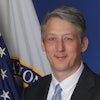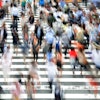U.S. colleges and universities currently face proliferating pro-Palestine student protests on their campuses, resulting in encampments and hundreds of arrests nationwide. Dr. Omar WasowBerkeley Center for Race and Gender
Dr. Omar WasowBerkeley Center for Race and Gender
It’s a tactic that’s become more prominent following the 59-day Occupy Wall Street protests against economic inequality and corporate greed in Fall 2011, said Dr. Omar Wasow, assistant professor in the Department of Political Science at the University of California (UC) Berkeley, whose research focuses on Civil Rights-era protests during the 1960s.
“I think what we're seeing here is a kind of combination of past protest techniques and this newer style of encampment,” he said. “A strength and a weakness of the encampment technique is that it puts a lot of pressure on administrators to respond to this daily presence that might be peaceful but a lot [in violation of] some campus rules.”
Harvard, MIT, and George Washington University on the East Coast. UCLA on the West. University of Chicago and Indiana in the Midwest. These are but some of the schools at which students are setting up encampments to protest the deadly Israel military operations in Gaza and make demands, such as for a ceasefire and for their schools to divest from companies with ties to Israel.
Residents at these various encampments nationally have been observed holding teach-ins, movie nights, and prayers and sharing food as they continue holding their ground.
Many of the schools, where these encampments of varying sizes are located, have viewed them as violations of campus policy, opposing them and asking for them to be dismantled.
The ongoing encampment at Columbia – one of the first in recent memory and one which has inspired and spawned multiple others nationwide – began April 17. Its students are now facing more threats of suspension from their university, which would prevent them from participating in classes, academic events, and extracurriculars.
Students are also setting up barricades and occupying campus buildings as part of their demonstrations, as seen recently at Cal Poly Humboldt and now at Columbia. Dr. Christopher M. Tinson
Dr. Christopher M. Tinson
These practices are not new. They echo back to the barricades and occupations of the 1960s. The very building that student protesters at Columbia have taken hold of now, Hamilton Hall, was barricaded in by students in 1968 in opposition to the Vietnam War and construction plans that could perpetuate segregation.
Students have not engaged in property damage and arson in the same way they did during the 1960s, Vox reported, though Columbia has cited that protesters have vandalized property and destroyed entrances on its campus.
Threats of suspension and expulsion
While colleges and universities continue to publicly voice their support for freedom of expression and civil protest, in the same breath, these same schools have been taking action to crack down on this civil disobedience.
GW and Columbia have suspended individuals for not complying with institutional demands to relocate or disperse. The latter has threatened those occupying its Hamilton Hall with expulsion.
“The individuals who remain on University Yard and any who attempt to join them are trespassing on private property and violating university regulations,” a GW statement on April 26 read. “We will pursue disciplinary actions against the GW students involved in these unauthorized demonstrations that continue to disrupt university operations.”
The scale of these protests has become large enough that there has been a wide variety of administrative responses. Similar to responses to Civil Rights-era protests, schools have also tried to negotiate with demonstrators, Wasow said.
“In the 1960s, there were college students who were expelled. Certainly, students were arrested and, in some cases, even subject to violence by vigilantes or police,” Wasow said. “In that way, there's some important similarities in how authorities are responding.”
Both now and during the antiwar protests against the Vietnam War, university officials appear to be having difficulty with deciding how to best handle the situation, said Dr. Meredith Lair, an associate professor of history at George Mason University, who specializes on the Vietnam War.
"In both cases, university officials seem caught unawares and kind of at a loss for what to do,” Lair said. “Universities are not traditional spaces, not in the ‘60s and ‘70s, not now. … They're special places that are supposed to be defined by inquiry, debate, and free thought.”
Another through-line between university behavior now and then is that of external pressure from donors, corporations, and conservative legislators, said Dr. James Gregory, associate chair of history at the University of Washington. Republican U.S. Congresswoman Elise Stefanik resembled these past lawmakers in the ways she has been grilling university leaders on campus antisemitism in December 2023 and this April.
It is difficult to discuss institutional responses to these ongoing protests without mentioning the use of police power.
In some cases, law enforcement has been brought in by the city to intervene. In others, it’s the schools themselves asking for police to help disperse protesters. Either way, police in riot gear are now common sightings at these demonstrations, arriving to apprehend students and disperse their collective efforts.
Hundreds of students in total have been arrested by police on campuses nationwide during recent antiwar protests, which have been largely peaceful.
This actually comes in contrast to antiwar demonstrations against the Vietnam War in 1967 through 1973, where police presence on campuses in response to “peaceful civil disobedience” was actually rare, said Gregory, who is the director of the UW Mapping American Social Movements project.
Citing the project, Gregory explained that only a slim portion of hundreds of demonstrations in 1970 resulted in arrests for peaceful protests, such as those without attacks and seizures of buildings.
“The idea of just arresting people for being on a lawn and holding a protest in an unauthorized place on campus ... was not something that campus administrators thought was serious enough to call in outside police and have students arrested,” Gregory said, contrasting it to the wave of police crackdowns and arrests of camping protests today.
Following the 1964 Free Speech Movement protests at UC Berkeley, U.S. colleges and universities had learned not to be “heavy-handed” and suppress students, particularly those engaging in peaceful activities, Gregory explained.
Responding to peaceful civil disobedience with police harks back to the Cold War period, when campuses maintained rules about permissible politics and protest locations on campus, he said.
But that’s not to say that police intervention and violence did not occur in the 1960s and 1970s. One of the most striking examples of this is the 1970 Kent State Massacre, when Ohio National Guard killed four students and injured nine during protests at Kent State University against U.S. military expansion into Cambodia.
“Across the country, in campuses all through the later '60s, it's when police were called in that things escalated,” Gregory said.
Police violence against demonstrators itself played in a role in driving more bystanders and students to participate in the protests of the time, Lair explained.
“A lot of students were ignorant of what was happening in the Vietnam war and then would observe protesters being abused by university officials, campus police, or local police,” Lair said. “That would kind of radicalize them and cause them to get informed and to protest what they saw as brutality, overreach, or unfair treatment of protesters.”
Lair said she hasn’t necessarily seen those kinds of subsequent surges in protesters following current-day police responses. The ways in which universities and police address these protests exist amid larger conversations about violence carried out by law enforcement following the 2020 police killing of George Floyd, she said.
“Some of the universities have talked about dislodging, using the police. Some have gone forward and done that. Some have threatened to do it and decided not to,” Lair said. “The optics are very bad.
“I think there's an awareness that the optics, the negative press around it, and the potential for people to get really hurt outweighs just allowing the thing to play itself out.”
Though police responses to the current wave of protests have not resulted in deaths, to count that as a victory is “low-hanging fruit,” said Dr. Christopher M. Tinson, an associate professor of history at Saint Louis University who focuses on Civil Rights-era protests.
U.S. society has historically done a poor job of “institutionalizing de-escalation,” and police and institutions hold power that students just don’t, he added.
“What ends up happening is when policing authorities ... whatever entities of law and order they call to these campuses to break up these encampments, they have always exacerbated the situation,” Tinson said. “These have never been moments where they become the peacemakers. That's the thing that we have not learned from the 1960s.
“I don't think that university administrations are really thinking about de-escalation," he said. "They're thinking about removal. They're thinking about quelling dissent.”





















